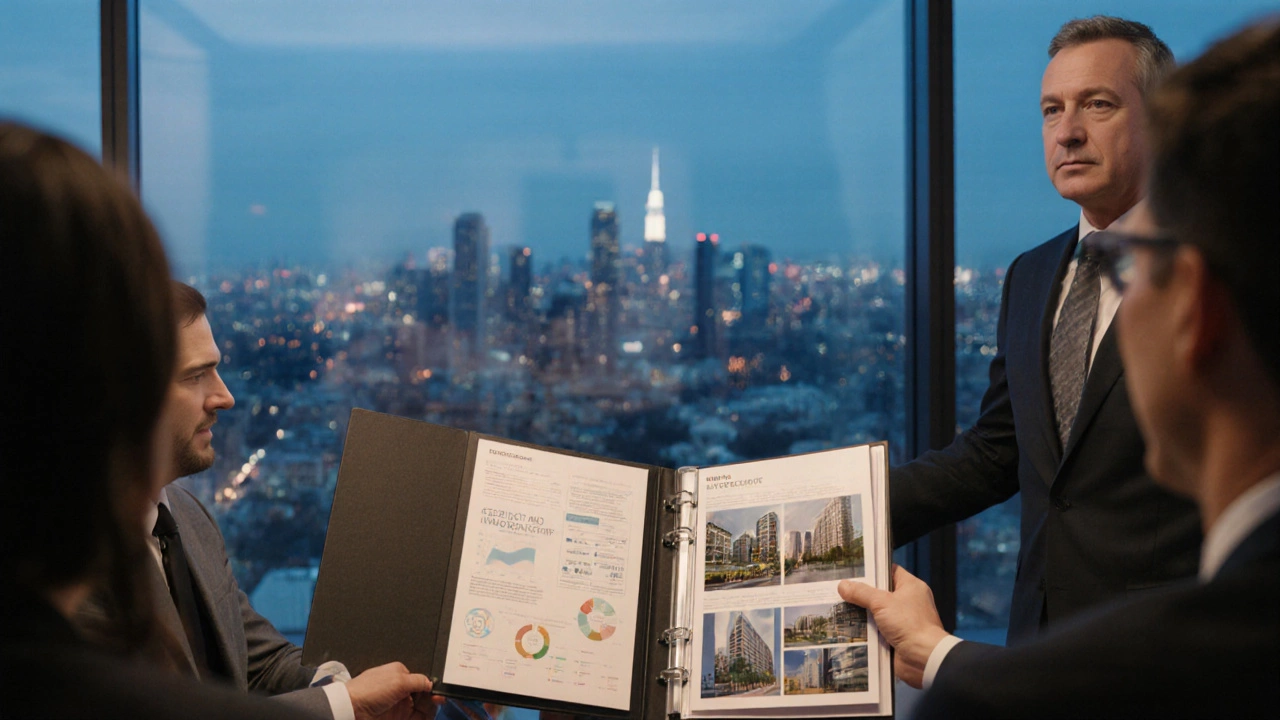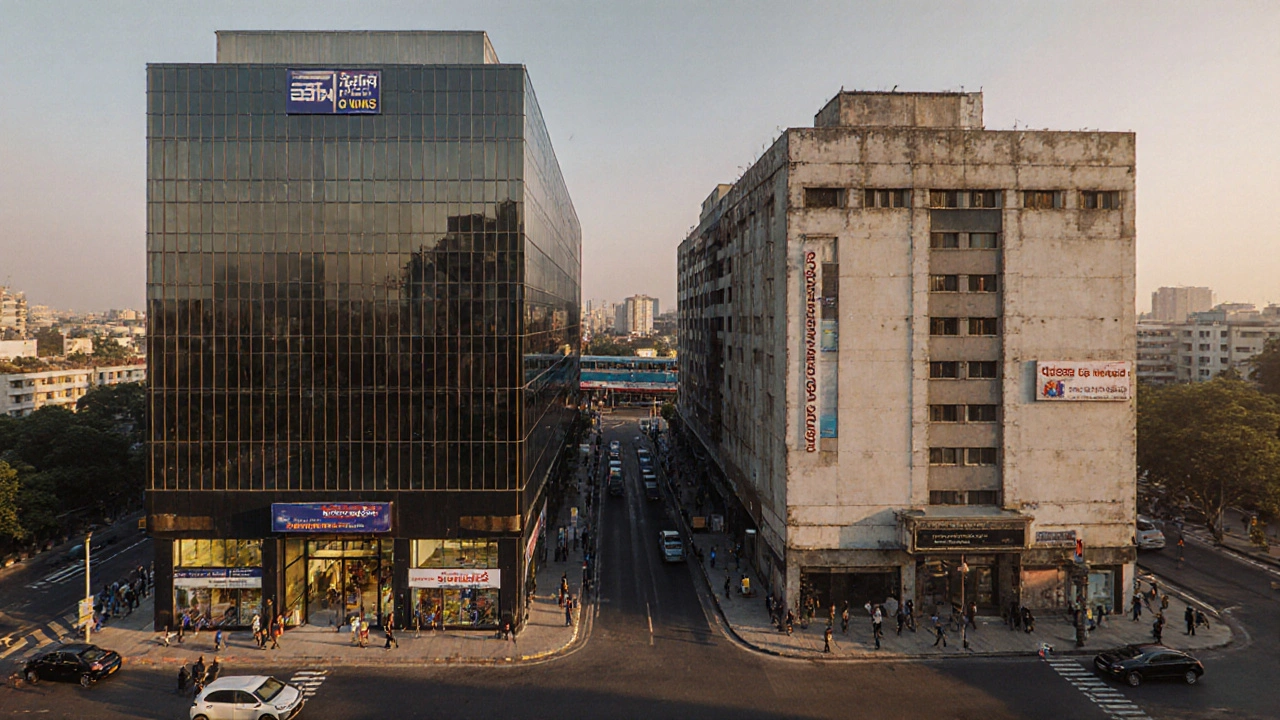Commercial Property Value Calculator
Calculate the estimated value of your commercial property using Net Operating Income (NOI) and market cap rate. Adjust inputs to see how improvements affect your valuation.
Estimated Property Value
This is the estimated value based on your inputs using the formula: Value = NOI ÷ Cap Rate
Key Insights from Your Inputs
NOI Impact: Higher NOI directly increases property value. A 5% increase in NOI would add approximately $0 to value.
Cap Rate Impact: A lower cap rate indicates lower perceived risk and increases value. A 0.5% decrease in cap rate could increase value by 0.0%.
Pro Tip: The article explains how you can increase value by improving NOI through lease renegotiations (5-15% value boost) or reducing cap rates by enhancing tenant quality and property condition.
Ever wondered why two identical office blocks can fetch wildly different prices? The answer lies in how sellers and investors shape commercial property value. It isn’t just a number scribbled on a contract-it's the result of a series of decisions, upgrades, and market dynamics that you can control. Below is a practical playbook that walks you through every lever you can pull to create more value before you list a commercial asset.
What is Commercial Property Value?
Commercial Property Value is the monetary worth of a commercial real‑estate asset as determined by a combination of income potential, location strength, physical condition, and market perception. It differs from residential appraisal because buyers focus on return on investment rather than personal use.
The value you see on a listing is often an estimate, not a final figure. By influencing the inputs-rental income, lease terms, or even zoning-you can shift that estimate upward.
Core Drivers That Push the Value Higher
Think of value creation as a recipe. Each ingredient adds flavor, and the right balance produces a premium dish.
- Location: Proximity to transport hubs, CBDs, or growth corridors drives foot traffic and rent premiums.
- Rental Income: The higher the stabilized net operating income (NOI), the more attractive the asset.
- Capitalization Rate (Cap Rate): Lower cap rates signal lower perceived risk, inflating value for a given NOI.
- Tenant Quality: Long‑term leases with credit‑worthy tenants reduce vacancy risk.
- Property Improvements: Upgrades to façade, systems, or layout increase rent‑able space and appeal.
- Zoning & Planning Permissions: Allowing mixed‑use or higher density can unlock new revenue streams.
- Economic Indicators: Employment growth, population influx, and interest‑rate trends shape investor appetite.
Each driver can be measured, optimized, and communicated to potential buyers.
Step‑by‑Step Method to Create Value Before Sale
- Audit Existing Income: Pull the latest rent roll, identify under‑market leases, and calculate current NOI.
- Renegotiate Leases: Offer short‑term incentives for tenants to sign longer, higher‑rent contracts. Even a 3‑year extension at a 5% increase can boost NOI noticeably.
- Upgrade Core Systems: Replace aging HVAC, lighting, or fire‑safety systems. Energy‑efficient upgrades often qualify for government rebates and can be marketed as cost‑saving features.
- Enhance Curb Appeal: Fresh paint, modern signage, and a clean entrance improve perceived value and allow owners to command higher rents.
- Re‑configure Space: If the floor plate permits, subdivide large units into smaller, higher‑priced sections, or conversely combine smaller units for larger tenants.
- Secure Planning Changes: Engage a town planner to explore rezoning for mixed‑use, additional floors, or loading dock additions. Even a pre‑application notice can increase buyer confidence.
- Document All Improvements: Keep receipts, warranties, and before‑after photos. A well‑packaged improvement dossier acts as proof of value.
- Update Market Data: Source recent comparable sales (comps) within a 5‑km radius and a 12‑month window. Include vacancy rates and cap rates for each comp.
- Prepare a Pro‑Forma: Project future cash flows under best‑case and base‑case scenarios. Highlight upside potential for a buyer willing to invest further.
Following these steps can lift the perceived market value by anywhere from 5% to 20%, depending on the starting point.

Valuation Approaches You Should Know
Buyers typically run three parallel calculations. Understanding each helps you position your asset effectively.
| Approach | Main Formula | Key Inputs | Best Used For |
|---|---|---|---|
| Income (Direct Capitalization) | Value = NOI ÷ Cap Rate | Stabilized NOI, market cap rate | Stable, fully‑let properties |
| Sales Comparison | Value = Average of recent comparable sales (adjusted) | Sale prices, size, location, age, tenancy | Properties in active markets with many comps |
| Cost Approach | Value = Replacement Cost - Depreciation + Land Value | Construction cost data, depreciation schedule, land value | New or specialized buildings where comps are scarce |
When you improve a property, you’re essentially raising the inputs in these formulas-higher NOI, better comps, or lower depreciation.
Quick Checklist Before You List
- Confirm all leases are current and document rent escalations.
- Compile a list of recent upgrades with cost breakdowns.
- Obtain a market cap‑rate report for your sub‑type (office, retail, industrial).
- Gather at least three comparable sales with adjustment notes.
- Prepare a concise investment summary (NOI, cap rate, projected returns).
- Engage a qualified valuer early to validate your numbers.

Common Pitfalls and Pro Tips
Pitfall: Listing before lease renewals are secured. Tip: Secure extensions first; buyers discount properties with imminent expirations.
Pitfall: Over‑investing in cosmetic upgrades that don’t affect rent. Tip: Focus on elements that improve energy efficiency or usable floor area-these directly boost NOI.
Pitfall: Ignoring zoning opportunities. Tip: Even a small amendment allowing signage can raise rent by 10% in high‑traffic zones.
By avoiding these traps, you keep the value‑creation margin high and reduce negotiation friction.
Final Thoughts
Creating commercial value isn’t magic; it’s a series of deliberate actions that enhance income, reduce risk, and align the asset with market expectations. Treat the process like a project-set clear milestones, track costs, and communicate the improvements to prospective buyers. When the numbers add up, the sale price follows.
What is the biggest factor influencing commercial property value?
Typically the property’s net operating income (NOI) relative to the prevailing market cap rate drives the bulk of value. Higher, stable NOI and lower cap rates translate to higher valuations.
How much can I realistically increase value through renovations?
A well‑targeted upgrade that improves rent‑able area or operating efficiency can add 5‑15% to value. Cosmetic fixes alone usually stay under 5%.
Should I use the income approach or sales comparison for valuation?
Use both. The income approach captures cash‑flow potential, while comps validate market perception. Reconcile the two for a credible asking price.
Is it worth applying for a zoning change before selling?
If the change unlocks a new use or higher density that aligns with local demand, it can add significant premium-often 10‑20% of total value. Conduct a cost‑benefit analysis first.
How do I present my improvement dossier to buyers?
Create a short PDF with before‑and‑after photos, a timeline, itemized costs, and any energy‑saving certifications. Highlight ROI for each upgrade.

